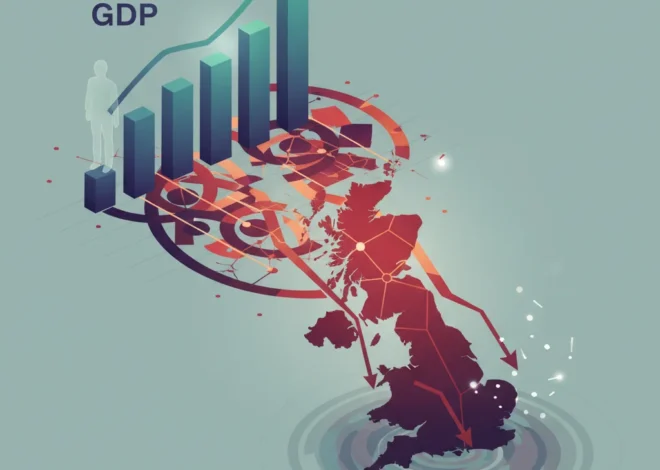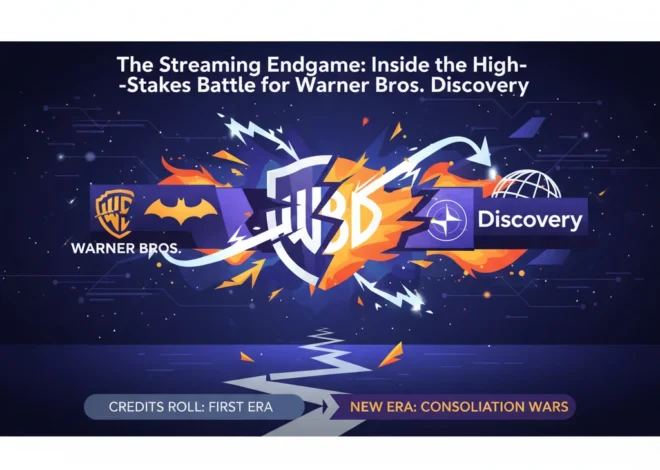
The Katsu Principle: What Two Specialist Restaurants Teach Us About Modern Investing and Business Strategy
In the world of finance and investing, we often seek wisdom from market titans, dense economic reports, and complex quantitative analyses. We pore over stock market charts and debate the intricacies of monetary policy. But what if one of the most potent lessons in modern business strategy wasn’t found in a boardroom or on a trading floor, but on a quiet London street, split between two specialist Japanese restaurants?
Renowned critic Jay Rayner’s recent review of Katsuro and Hinaga for the Financial Times, ostensibly about a quest for the perfect pork cutlet, offers a profound case study in strategic focus, market positioning, and the very nature of value creation. By examining these two distinct culinary establishments, we can uncover a powerful framework for evaluating businesses, structuring investment portfolios, and navigating the complexities of today’s economy. This isn’t just about food; it’s about the fundamental principles that drive success, whether you’re serving tonkatsu or pioneering new financial technology.
Case Study 1: Katsuro and the Power of Hyper-Specialization
The first stop on Rayner’s journey is Katsuro, a restaurant with a singular, unapologetic mission: to perfect tonkatsu, the Japanese art of the breaded and deep-fried pork cutlet. As Rayner describes, the menu is “brief to the point of being a haiku,” focusing almost exclusively on different cuts of high-quality pork. The experience is precise, efficient, and centered on executing one thing to an extraordinarily high standard. The price for this excellence? A reasonable £25 for a set meal.
From a business and investment perspective, Katsuro is a masterclass in the “niche dominance” strategy. This model is increasingly prevalent in the world of fintech and technology startups. Instead of attempting to build a sprawling, full-service digital bank from day one, successful innovators often identify a single, painful pressure point within the traditional banking ecosystem and solve it better than anyone else. Think of companies that focus solely on international money transfers, small business invoicing, or stock market data APIs. They are the Katsuros of the financial world.
The advantages of this approach are numerous:
- Brand Clarity: The value proposition is crystal clear. Katsuro is “the katsu place.” A specialized fintech is “the best way to do X.” This focus simplifies marketing and builds a strong reputation among a target demographic.
- Operational Excellence: By concentrating resources on a single product or service, the business can achieve unparalleled quality and efficiency. Supply chains are simpler, staff training is more focused, and the product can be refined to near-perfection.
- Economic Moat: Deep expertise in a narrow field creates a significant barrier to entry. A competitor can’t simply replicate the years of refinement and accumulated knowledge overnight. This is a key factor analysts look for when evaluating a company’s long-term viability.
However, the hyper-specialist model is not without its risks. The primary vulnerability is market saturation or a sudden shift in consumer preference. What if a new food trend eclipses katsu? In the financial world, what if a regulatory change or a new technology makes your niche product obsolete? Investors in single-product companies must constantly monitor the health of that specific market segment. For these businesses, diversification isn’t in their product line, but in their relentless pursuit of being the undisputed best at what they do. The success of this model proves that in a crowded market, doing one thing perfectly is often more profitable than doing many things adequately.
Case Study 2: Hinaga and the Economics of Curated Experience
After the main course at Katsuro, Rayner’s review takes a fascinating turn. For dessert, he and his companion move to a different venue entirely: Hinaga, an intimate, high-end establishment offering an omakase-style experience. Here, the focus shifts from a single, perfect product to a holistic, curated journey. It’s about the ambiance, the personal interaction with the chef, and a meticulously crafted sequence of small, exquisite offerings. The price point, naturally, reflects this bespoke service, with menus reaching upwards of £185 per person.
Hinaga represents a completely different, yet equally valid, business strategy: premiumization through experience. This is the model of high-touch wealth management firms, bespoke financial advisors, and premium trading platforms that offer exclusive research, personalized support, and a seamless user interface. The product isn’t just a transaction; it’s the entire relationship and the feeling of being a valued client.
In an age of algorithm-driven decisions and automated services, the “Hinaga model” leverages the one thing technology struggles to replicate: genuine human connection and trust. This is particularly relevant in high-stakes areas of finance, where clients are not just buying a product, but entrusting their future to a provider. The value is not in the raw material (the stock trade, the loan) but in the expert curation and guidance wrapped around it. This business model has been shown to build incredible customer loyalty, with some studies indicating that companies focused on customer experience can see revenue increases of 4-8% above their market.
Below is a comparative analysis of these two powerful business models, framed for an investor’s perspective:
| Metric | Katsuro (The Hyper-Specialist) | Hinaga (The Bespoke Experience) |
|---|---|---|
| Value Proposition | The best single product on the market. | A unique, personalized, and high-touch service journey. |
| Target Audience | Niche enthusiasts, quality-conscious consumers. | High-net-worth individuals, relationship-driven clients. |
| Pricing Strategy | Premium for the product category, but accessible. | Exclusivity pricing, based on overall value and service. |
| Key Growth Driver | Reputation, word-of-mouth, operational efficiency. | Customer lifetime value, retention, referrals. |
| Scalability | High (can be replicated in new locations). | Low (inherently limited by personalization). |
| Primary Risk | Market disruption, changing tastes, new competition. | Reputational damage, loss of key talent. |
Building a Portfolio with the Katsu Principle
The lessons from Katsuro and Hinaga extend directly to the art of investing. A well-constructed portfolio often contains elements of both strategies. Your “Katsuro” investments might be high-conviction stakes in innovative, single-product companies poised to dominate a specific niche. These are often higher-risk, higher-reward plays that require diligent research into the durability of their specific market.
Conversely, your “Hinaga” investments represent the blue-chip, established firms with wide moats built on brand, customer loyalty, and diversified revenue streams. They could also be managed funds or ETFs that provide a curated, diversified exposure to the broader economy, managed by experts. These holdings provide stability and a different kind of value—not from explosive growth in one area, but from trusted, holistic management over time.
The key is understanding what role each asset plays. Trying to get a Katsuro-style company to behave like a diversified conglomerate is a recipe for failure, as is expecting a massive, stable institution to have the agility of a niche startup. This strategic clarity is the cornerstone of successful, long-term wealth creation. According to a PwC report on financial services strategy, clear strategic identity is a leading indicator of performance, reinforcing the idea that choosing a lane is critical.
The Miller Doctrine: Decoding the Economic Blueprint for a Potential Second Trump Term
The Final Takeaway: Strategy on a Plate
The journey from a bustling katsu-ya to an intimate omakase counter is more than a dinner plan; it’s a living diagram of strategic choice. Katsuro teaches us that focus, when pursued with relentless dedication, is a formidable competitive advantage. Hinaga reminds us that in a world of mass production, there is immense and growing value in curation, personalization, and the human touch.
For investors, finance professionals, and business leaders, the lesson is clear. Whether you’re analyzing a potential investment, structuring a portfolio, or defining your company’s path forward, ask yourself the Katsu question: Are we trying to be the best in the world at one specific thing, or are we creating an unforgettable, premium experience? The most successful endeavors, in both cuisine and capital, are born from a clear and confident answer to that question.
The Dragon's Grip: Why China's Social Crackdown is a Critical Red Flag for Global Investors
The next time you analyze a company’s position in the stock market or evaluate the latest trend in economics, remember the tale of two restaurants. The most profound insights are often hidden in plain sight, waiting for a new lens through which to be viewed. Sometimes, that lens is a perfectly fried pork cutlet.


